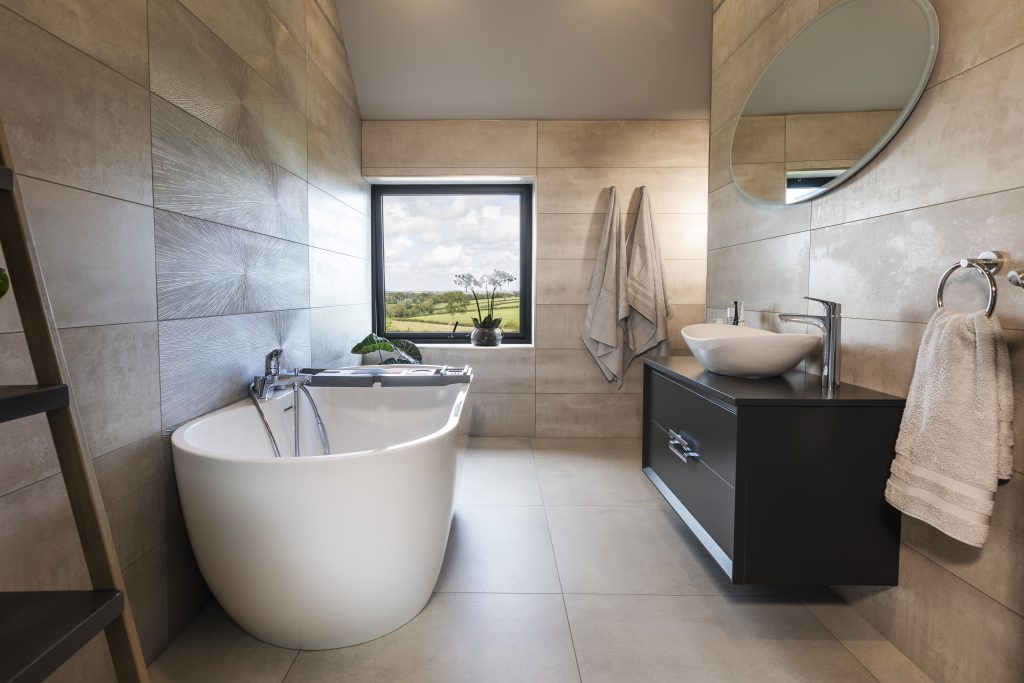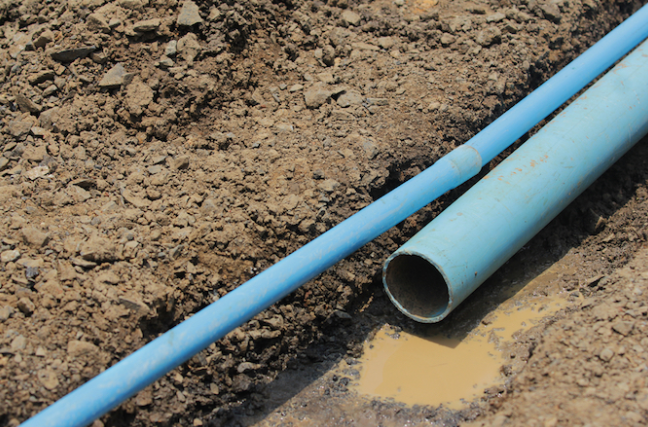Planning and executing a bathroom plumbing project can be a daunting task, especially if you’re not a professional plumber. However, with the right knowledge and guidance, even a DIY enthusiast can successfully tackle this project. In this comprehensive guide, we’ll break down the essential aspects of plumbing a bathroom, making it easy to understand and follow. From waste pipes to water supply and running pipes in walls and floors, we’ve got you covered.
Waste Pipes: The Foundation of Bathroom Plumbing
Waste pipes are the unsung heroes of any bathroom plumbing system. They are responsible for carrying away wastewater from your sanitaryware, ensuring a clean and functional bathroom environment. Let’s delve into the world of waste pipes.
Pipe Sizing Matters
Before you start positioning your bathroom fixtures, it’s crucial to understand the sizing of waste pipes. The size of your waste pipes will depend on the type of fixture you’re installing:
- Showers and Baths: These require a 40mm waste pipe.
- Wash Hand Basins: These need a 32mm waste pipe.
These waste pipes are then routed to a primary 100mm soil pipe. It’s essential to note that both Northern Ireland (NI) and the Republic of Ireland (ROI) use metric measurements for waste pipes.

Minimizing Bends and Junctions
To prevent potential blockages, it’s essential to minimize bends and junctions in your waste pipes. Ideally, any bends should be easily accessible and equipped with a means to open them when needed. Blockages can disrupt the flow of wastewater, leading to plumbing problems.
Achieving the Right Fall
Proper fall in your waste pipes is critical. Too little fall can result in slow water drainage, allowing solids to settle in the pipework. On the other hand, too much fall can cause water to rush away too quickly, leaving solids behind. Achieving the right balance is essential for efficient waste removal.
Concrete Floors and Waste Pipes
If your bathroom has concrete floors, you must carefully plan the positioning of waste pipes during the early stages of construction. Moving waste pipes laid in concrete can be a challenging task and may impact your choice of sanitaryware. For example, if you decide to relocate a basin slightly, it may require chiseling up the floor or choosing a different style of basin.
External Wall and Soil Vent Pipe
Waste pipes are typically directed to an external wall, leading to a soil vent pipe (SVP), also known as a soil stack. The SVP serves multiple functions:
- Regulates pressure in the drainage system.
- Eliminates bad odors.
- Vents gases above windows and doors.
- Connects to the mains wastewater drain or onsite wastewater treatment system.
In a standard setup, both wastewater and greywater (from basins, showers, kitchen sinks, or dishwashers) are plumbed externally into the SVP. To maintain aesthetics, plan to hide the pipes internally and use a pressure regulating system on the pipe to fulfill SVP functions.
Understanding Pipe Materials
Waste pipes are commonly made of uPVC. Older properties may have cast iron externally, while contemporary builds use UV-resistant black uPVC for external pipes. Internal waste pipes are typically brown in color.

Water Supply: Ensuring Reliable Water Flow
A proper water supply system is crucial for your bathroom. Let’s explore the key aspects of water supply.
Modern Water Supply
The traditional method of supplying water to homes involved feeding a mains water pipe to an attic tank, which used gravity to distribute water. Nowadays, it’s more common to have a plant room, either in the house or a shed, equipped with a pump (if you have a well) or relying on mains water pressure.
Rainwater Usage
Although not mandatory in NI or ROI, using rainwater for flushing toilets and watering the garden is an eco-friendly choice. Consider installing a manifold in the plant room to facilitate rainwater utilization.
Locating the Stopcock
For easy water shut-off access, make sure to install a stopcock in a convenient location. The exact placement will depend on your setup, so consult with your plumber for expert guidance.
Pipe Materials and Sizing
Choosing the right materials for your supply network within the house is essential. Copper pipes remain a popular choice among professionals, but new plastic pipework is more flexible and easier to work with, especially in confined spaces.
- Standard Water Pipe: Measures 15mm in diameter, suitable for baths.
- Larger Shower Head: Consider upgrading to a 22mm pipe for faster and stronger water flow.
In NI, water supply pipes come in metric measurements (15mm and 22mm), while in ROI, they come in inches (1/2 inch and 3/4 inch). Ensure you use the appropriate measurements for your region.
Dealing with Older Properties
Older properties may still have larger bore iron supply pipes. If possible, consider replacing these pipes when renovating the bathroom. If not, plumbing supply stores offer adaptor connections to fit modern copper pipes to older ironwork.
Thoughtful Layout Design
When designing the layout, aim for a logical and organized plan to avoid a confusing network of pipes. Keeping pipes running together or at right angles to each other in an orderly pattern reduces the risk of future complications and makes maintenance easier.
Insulation Matters
Ensure proper insulation for your supply pipework, even if it’s buried in concrete. Insulation helps prevent heat loss, condensation, and potential leaks.

Running Pipes in Walls and Floors: A Delicate Task
Embedding pipework in walls or floors requires careful planning and execution. Let’s explore the best practices for running pipes in concealed spaces.
Avoid Mechanical Joints
Avoid using mechanical joints in locations where you can’t access them for tightening. This ensures a secure and leak-free connection.
Timber Floors Considerations
When dealing with timber floors, ensure that pipes are well out of the range of nails to prevent accidental damage during construction or renovations.
Flexible Copper: The Ideal Choice
Coated flexible copper pipes are an excellent choice when dealing with hidden joints and embedded pipework. They are more bendable than standard copper and offer versatility. Some types even come with a plastic coat, providing protection against concrete’s corrosive nature.
The Benefits of Conduits
When burying plastic pipework, consider using a conduit, a loose-fitting outer pipe that covers the water pipes. This allows for easy replacement of damaged sections by pulling out the damaged pipe and inserting a new one.
Precision in Placement
Precision is paramount when positioning pipework in a bathroom. In poured concrete floors, maintaining careful placement relative to walls can be challenging. One trick to gain some flexibility is to use a temporary collar made from a piece of soil pipe. This collar, filled with sand, prevents concrete from fixing the pipes entirely.
Dealing with Walls
When it comes to walls, cutting channels for pipework can be a complex task. Cutting too deep a channel can affect the wall’s structural integrity. Vertical channels are acceptable, but horizontal channels should be avoided.
Embrace False Walls
Consider using false walls in appropriate places to run pipework through. For example, at the head of the bath or on one side of a shower enclosure, false walls can hide the pipework effectively.
External Routes
If possible, you can run pipework through rooms adjacent to the bathroom and have them poke through the bathroom walls at the appropriate location. However, this extends the potential for damage from leaks and may cause noise issues if adequate sound insulation is not in place.
Ceiling Routes
For pressurized water systems or carefully planned pipework layouts, you may have the option to run pipes in the ceiling of the bathroom, dropping down to supply fixtures as needed.
Conclusion
Plumbing a bathroom may seem like a daunting task, but with careful planning and attention to detail, it’s a project that DIY enthusiasts can successfully undertake. Understanding waste pipes, water supply systems, and the intricacies of running pipes in walls and floors is crucial for a smooth and functional bathroom plumbing installation. Always consult with professionals when needed, and don’t forget to prioritize safety and compliance with local building codes. With this comprehensive guide, you’re well-equipped to tackle your bathroom plumbing project with confidence.




